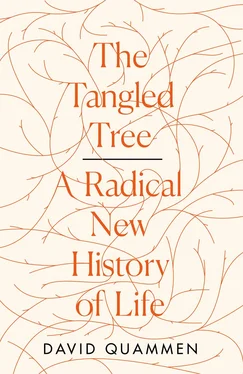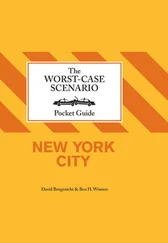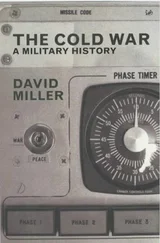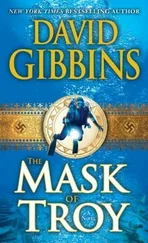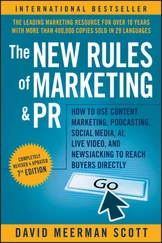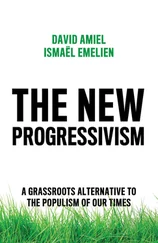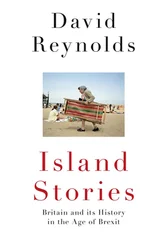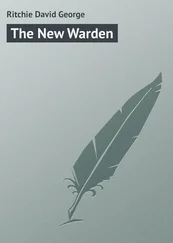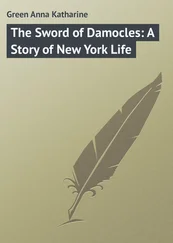William Collins
An imprint of HarperCollins Publishers
1 London Bridge Street
London SE1 9GF
WilliamCollinsBooks.com
This eBook first published in Great Britain by William Collins in 2018
Copyright © David Quammen 2018
Jacket design by Jack Smyth
David Quammen asserts the moral right to be identified as the author of this work.
A catalogue record for this book is available from the British Library.
All rights reserved under International and Pan-American Copyright Conventions. By payment of the required fees, you have been granted the non-exclusive, non-transferable right to access and read the text of this e-book on-screen. No part of this text may be reproduced, transmitted, down-loaded, decompiled, reverse engineered, or stored in or introduced into any information storage and retrieval system, in any form or by any means, whether electronic or mechanical, now known or hereinafter invented, without the express written permission of HarperCollins.
Source ISBN: 9780008310684
eBook Edition © September 2018 ISBN: 9780008310691
Version: 2018-07-31
To Dennis Hutchinson and David Roe, my attorneys of the soul
Contents
Cover
Title Page
Copyright
Dedication
THREE SURPRISES:An Introduction
PART I:Darwin’s Little Sketch
Chapter 1
Chapter 2
Chapter 3
Chapter 4
Chapter 5
Chapter 6
Chapter 7
Chapter 8
PART II:A Separate Form of Life
Chapter 9
Chapter 10
Chapter 11
Chapter 12
Chapter 13
Chapter 14
Chapter 15
Chapter 16
Chapter 17
Chapter 18
Chapter 19
Chapter 20
Chapter 21
Chapter 22
Chapter 23
Chapter 24
Chapter 25
Chapter 26
Chapter 27
PART III:Mergers and Acquisitions
Chapter 28
Chapter 29
Chapter 30
Chapter 31
Chapter 32
Chapter 33
Chapter 34
Chapter 35
Chapter 36
PART IV:Big Tree
Chapter 37
Chapter 38
Chapter 39
Chapter 40
Chapter 41
Chapter 42
Chapter 43
Chapter 44
Chapter 45
Chapter 46
Chapter 47
Chapter 48
PART V:Infective Heredity
Chapter 49
Chapter 50
Chapter 51
Chapter 52
Chapter 53
Chapter 54
Chapter 55
Chapter 56
Chapter 57
Chapter 58
Chapter 59
PART VI:Topiary
Chapter 60
Chapter 61
Chapter 62
Chapter 63
Chapter 64
Chapter 65
Chapter 66
Chapter 67
Chapter 68
Chapter 69
PART VII:E Pluribus Human
Chapter 70
Chapter 71
Chapter 72
Chapter 73
Chapter 74
Chapter 75
Chapter 76
Chapter 77
Chapter 78
Chapter 79
Chapter 80
Chapter 81
Chapter 82
Chapter 83
Chapter 84
Notes
Bibliography
Illustration Credits
Index
Acknowledgments
About the Book
About the Author
Also by David Quammen
About the Publisher
THREE SURPRISES
An Introduction
Life in the universe, as far as we know, and no matter how vividly we may imagine otherwise, is a peculiar phenomenon confined to planet Earth. There’s plenty of speculation and probabilistic noodling, but zero evidence, to the contrary. The mathematical odds and chemical circumstances do seem to suggest that life should exist elsewhere. But the reality of such alternate life, if any, is so far unavailable for inspection. It’s a guess, whereas earthly life is fact. Some astounding discovery of extraterrestrial beings, announced tomorrow, or next year, or long after your time and mine, may disprove this impression of Earth’s uniqueness. For now, though, it’s what we have: life is a story that has unfolded here only, on a relatively small sphere of rock in an inconspicuous corner of one middling galaxy. It’s a story that, to the best of our knowledge, has occurred just once.
The shape of this story, in its broad outlines as well as its finer details, is therefore a matter of some interest.
What happened, over the course of roughly four billion years, to bring life from its primordial origins into the fluorescence of diversity and complexity we see now? How did it happen? By what concatenation of accident and determination did it yield creatures so wondrous as humans—and blue whales, and tyrannosaurs, and giant sequoias? We know there have been crucial transitions in evolutionary history, improbable incidents of convergence, dead ends, mass extinctions, big events, and little ones with big consequences—including some fateful contingencies that have left behind evidence of their occurrence embedded subtly throughout the fossil record and the living world. Alter those few contingencies, as a thought experiment, and everything would be different. We wouldn’t exist. Animals and plants wouldn’t exist. Why did it happen as it did, and not some other way? Religions have their responses to such questions, but for science, the answers must be discovered and then supported with empirical evidence, not received in a holy trance.
This book is about a new method of telling that story, a new method of deducing it, and certain unexpected insights that have flowed from the new method. The method has a name: molecular phylogenetics. Wrinkle your nose at that fancy phrase, if you will, and I’ll wrinkle with you, but, in fact, what it means is fairly simple: reading the deep history of life and the patterns of relatedness from the sequence of constituent units in certain long molecules, as those molecules exist today within living creatures. The molecules mainly in question are DNA, RNA, and a few select proteins. The constituent units are nucleotide bases and amino acids—more definition of those to come. The unexpected insights have fundamentally reshaped what we think we know about life’s history and the functional parts of living beings, including ourselves. In particular, there have come three big surprises about who we are—we multicellular animals, more particularly we humans—and what we are, and how life on our planet has evolved.
One of those three surprises involves an anomalous form of creature, a whole category of life, previously unsuspected and now known as the archaea. (Their name gets uppercased when used as a formal taxonomic category: Archaea.) Another is a mode of hereditary change that was also unsuspected, now called horizontal gene transfer. The third is a revelation, or anyway a strong likelihood, about our own deepest ancestry. We ourselves—we humans—probably come from creatures that, as recently as forty years ago, were unknown to exist.
The discovery and identification of the archaea, which had long been mistaken for subgroups of bacteria, revealed that present-day life at the microbial scale is very different from what science had previously depicted, and that the early history of life was very different too. The recognition of horizontal gene transfer (HGT, in the alphabet soup of the experts) as a widespread phenomenon has overturned the traditional certitude that genes flow only vertically, from parents to offspring, and can’t be traded sideways across species boundaries. The latest news on archaea is that all animals, all plants, all fungi, and all other complex creatures composed of cells bearing DNA within nuclei—that list includes us—have descended from these odd, ancient microbes. Maybe. It’s a little like learning, with a jolt, that your great-great-great-grandfather came not from Lithuania but from Mars.
Читать дальше
